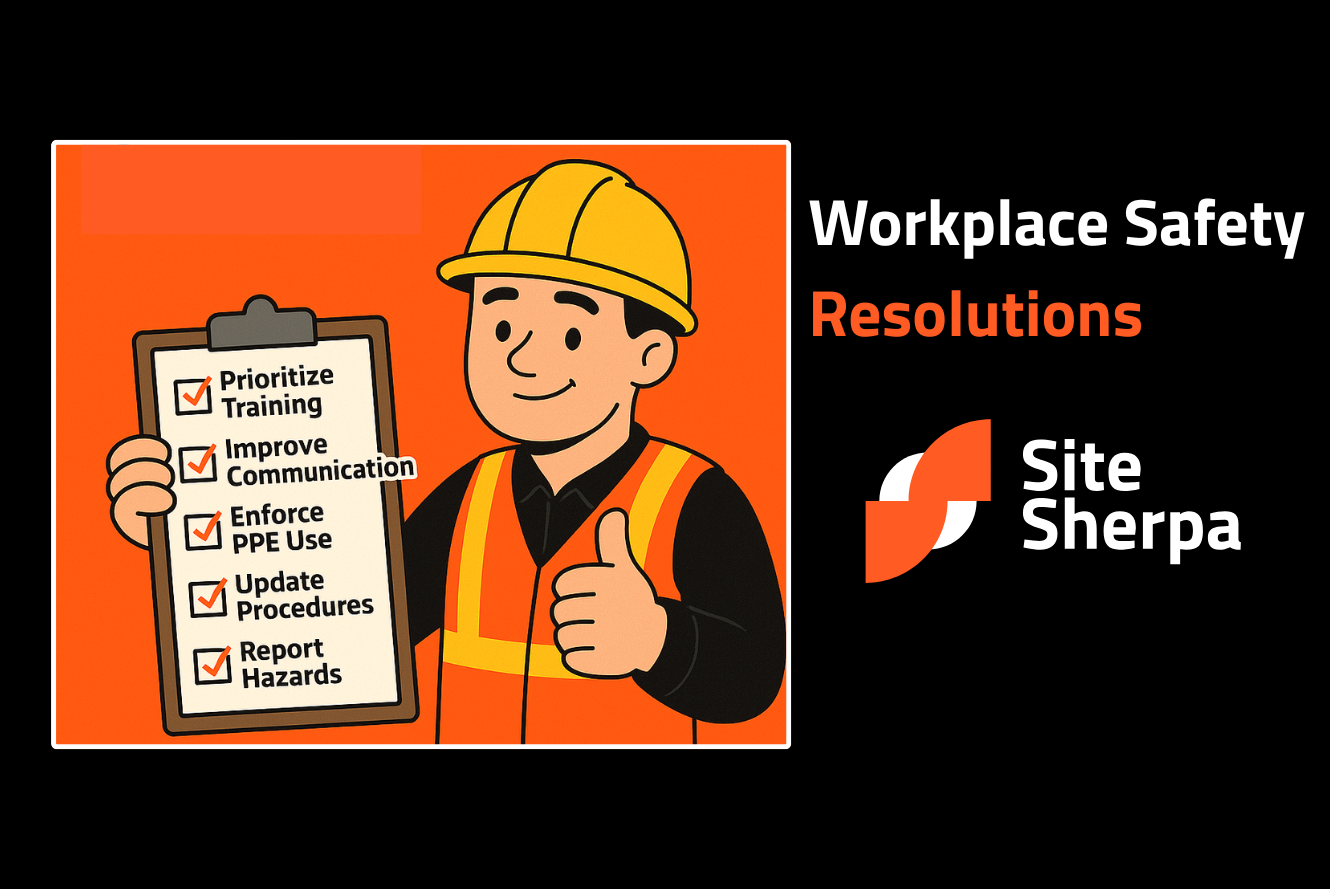5 Workplace Safety Resolutions for 2024
Top Safety Resolutions to Implement This Year
The most successful workplaces prioritize safety, communication, and employee well-being. As companies move into 2024, they must reassess their safety strategies to create a more secure and productive work environment. Partnering with a professional safety consultancy, such as SiteSherpa, is essential for businesses looking to strengthen workplace safety. SiteSherpa provides expert guidance on risk mitigation, regulatory compliance, and safety consultancy to help organizations prevent accidents and improve overall workplace well-being. Here are five workplace safety resolutions to implement in the new year.
Actionable Safety Goals for 2024
1. Set Measurable Safety Goals
Workplace safety initiatives often start strong but fade as the year progresses. Setting measurable safety goals keeps initiatives on track and ensures meaningful progress. Instead of making vague commitments, companies should establish clear objectives. For example, reducing workplace falls by 50% by the fourth quarter of 2024 provides a specific target to work toward. Achieving this goal requires practical steps such as installing slip-resistant mats, training employees on proper walking techniques, and reinforcing safety practices through regular inspections.
2. Ensure Personal Protective Equipment (PPE) Fits Properly
Providing personal protective equipment (PPE) is not enough; ensuring it fits correctly is essential for maximum protection. Ill-fitting PPE can create discomfort, limit mobility, and reduce its effectiveness in preventing injuries. Many workplaces overlook the importance of tailored PPE, particularly for women and individuals with diverse anatomical needs. Conducting a PPE assessment at the start of the year ensures all employees have equipment suited to their specific roles.
3. Prioritize Mental Health
A safe workplace goes beyond physical safety. Mental health directly impacts focus, decision-making, and overall workplace performance. Stress, burnout, and fatigue increase the risk of accidents and reduce employee engagement. Creating an environment that prioritizes mental well-being improves overall safety outcomes. Implementing wellness programs, encouraging open discussions about mental health, and providing employee assistance resources help workers manage stress. Physical safety measures must align with mental health initiatives to create a balanced, healthy workplace. Employees who feel supported perform better and contribute to a safer work environment.
4. Use Data to Predict and Prevent Workplace Hazards
Workplace safety should not be reactive. Companies can prevent accidents by analyzing trends and identifying risks before incidents occur. Reviewing past accident reports, tracking safety violations, and using data-driven safety assessments provide valuable insights. Understanding which hazards occur most frequently allows organizations to implement targeted solutions. Predictive analytics helps businesses stay ahead of safety challenges and refine training programs. Instead of waiting for accidents to happen, companies that use data-driven safety strategies protect employees and improve operational efficiency.
5. Foster Open Communication
Safety policies are only effective when employees actively participate in maintaining a safe workplace. Encouraging employees to report hazards, share concerns, and suggest improvements strengthens workplace safety. Creating an environment where employees feel comfortable speaking up4 fosters a proactive safety culture. Conducting regular safety meetings, involving employees in decision-making, and recognizing workers who contribute to safety initiatives reinforce the importance of communication. Organizations that prioritize open dialogue create a workplace where employees look out for one another, leading to fewer accidents and greater overall job satisfaction.
Why SiteSherpa is Vital for Workplace Safety
Workplace safety requires continuous effort, expertise, and a proactive strategy. Our Safety Consultancy service provides businesses with the tools, guidance, and compliance strategies needed to enhance workplace safety. By working with safety experts, organizations can set clear goals, implement data-driven safety solutions, and ensure employees receive the necessary training to prevent accidents. Investing in professional safety support reduces workplace risks, strengthens company culture, and fosters a safer environment for all.
Prioritizing workplace safety in 2024 requires clear goals, proactive communication, and expert guidance. Our Safety Consultancy service ensures businesses have the right tools, training, and compliance strategies to create a safer work environment. By taking meaningful steps toward workplace safety, organizations can reduce incidents, boost employee morale, and build a culture where safety is a shared responsibility.
We provide expert safety consultancy services that help businesses assess risks, develop safety programs, and ensure compliance with workplace health and safety regulations. By offering tailored solutions, Site Sherpa helps companies build proactive safety strategies that prevent incidents and protect employees.
Mental health affects an employee’s ability to focus, make decisions, and respond to hazards. High levels of stress and burnout can increase accident risks and reduce overall productivity. A workplace that prioritizes mental health sees better safety outcomes and higher employee satisfaction.
Simple but effective measures include improving signage, providing clear safety instructions, conducting peer-led training sessions, and encouraging employees to report hazards. Small adjustments, such as organizing workspaces to prevent tripping hazards, significantly enhance safety without requiring major investments.
Related Content
Join Our Newsletter
Receive expert insights, safety updates, and the latest updates in our services and apps. Stay ahead of workplace safety, compliance, and operational efficiency delivered straight to your inbox.


.png)
.png)
.png)
.png)
.png)
.png)
.png)
.png)
.png)